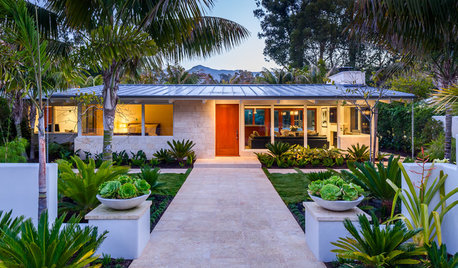(This is a bit of a rant.. so if you're not up for that, please move on. But it's a cry for help, I'm at the end of my gardening rope...)
I give up!! Or at least that's what I say ever year. Is it just me, or has anyone else noticed that it gets more impossible every year, to do veg gardening in central TX..? Not just the endless drought, but it seems the pests & disease have gotten worse and worse. Is it really climate change?
It's to the point that for the past several years (summer AND winter gardens) we've had no yields at all.. just complete failure.. a lot of work/$ invested for nothing. And nothing I do helps.
We have 4 small beds in the sunny side of a suburban yard in South Austin.. and the goal is to supplement our grocery costs by growing as much as I can.. but it's costing more work and $ than it's worth.
We compost all leaves & kitchen garbage, trying to amend the crappy soil.. and in hopes of not having to spend a lot of money buying dirt. (I will never get used to the idea of buying dirt! Seems crazy to me.) It's taken years to build the plots, dig up the rock-hard rocky/clay soil with a fork, and adding stuff to it, but every season it turns to cement again and it has to be completely re-weeded and broken up again.. doesn't really get much easier. And an endless amount of rocks that just keep bubbling up forever. Was trying to avoid spending $ on wood for raised beds, but at this point I'm thinking I gotta build some & just start buying soil.
For the first few years I was in CenTex (15 yrs ago), I had amazing veg gardens.. totally effortless. HUGE plants, HUGE yields, and I really don't remember any pests or diseases. But then we moved to a different neighborhood closeby.. could the slightest change in soil really change everything?
I compost, I buy some soil, manure, mulch, etc.. and have to hand-water constantly so the plants or seedlings don't die, but when I don't water because we have a bunch of rain it washes most everything (including all the topsoil I worked so hard to add/amend to the beds) away. So obviously raised beds will help that..
Some years ago I figured out that veg gardening in the Fall/Winter here was really the bomb. We were getting beets, spinach, peppers, greens, broccoli, lettuce, dill, etc. etc. But in recent years, it has been SO hot during the fall/winter that the seeds never even sprout at all (even with regular watering).. or when I just bought seedlings instead, they look sickly and just don't grow at all.. as in, completely stunted.. they just STOP. And they're covered with little bugs & mites that chew holes all through the leaves. I went to garden stores, they said buy this and buy that.. so I spent more money.. and of course had to buy a different spray for every different type of bug or fungus,, and of course all these things did nothing, and the plants still sat there, sad and wilted and still full of holes and bugs.
And is it my imagination or has tomato blight increased? Another thing I never had trouble with til a few years ago. We could always at LEAST get good tomatoes if nothing else in the summer, until this blight or fungus started taking over. It's now to the point where I buy about 15-20 healthy plants of different varieties (all recommended for Austin), every spring, and one by one I watch the blight coming up from the bottom (as I'm fighting it- spraying stuff, cutting off leaves, whatever..) and it kills off every plant before it even gets an edible tomato. (And don't get me started about stink bugs.. or Squash vine borers.. I'm crazy about squash.. but fought those nasty things for years, and eventually gave up on squash too.)
Also tried vermicomposting.. bought an expensive tiered system.. and every year was ordering a bag of worms, and every single time, within a few months it gets full of soldier fly larvae and between that and the heat, it drives out the worms they escape or die, and I'm left with a $200 container of rotting garbage and some dead larvae and no worms. They were supposed to increase in numbers, but instead they all die or disappear. So.. after several years of trying.. gave up on that too.
I'm beginning to think that gardening in this place is a big lie.. and it's just a way for garden stores to make money.. to keep promoting this lie...??
And as for 'native and adapted' landscape plants.... The amount of money I've spent on those too.. have always researched which ones are best, and where they should go, and have taken great care of them, done everything you're supposed to, and they all die... well about 1% of everything I've ever bought has survived and thrived. And yet I see other homes with these amazing native plants, all healthy, thriving.. Did they all hire professional gardeners?? Or do they all have an expensive irrigation system that is really keeping them alive? Most all plants on our whole property end up with little pale white spots all over them, spider mites, etc. I spend more time spraying stuff and trying to fight these things and it never seems to go away.
Even most herbs don't make it, or if they do, they are stunted and sickly.. if you can believe it- even rosemary!
For the veg garden, the only thing I can think now of is to finally build some real raised beds, and just dig out as much of the crappy soil as possible, and spend as much as it takes to BUY really good dirt to fill them.. and just expect that I'm gonna have to do that every year to keep it filled. (adding all the compost from the pile of course).
Can someone PLEASE help me.. WHAT am I doing wrong..?? Is anyone else noticing that it is getting harder and harder? Or is it just my bad luck.. is our property just cursed..?
Every season, despite everything, I always had renewed optimism,, but it's gotten less & less until there's not much left anymore.
Or.. it is just the soil, that seems to be poison to my plants?? Is it the climate changing so dramatically, that is too hard on plants, and bringing more pests & disease? Should I have underground irrigation hoses and are re-buried every year? Does anyone have specific soil recommendation for filling raised beds every year..? Should I use peat moss to hold the moisture? Should I completely give up on organics?
So many questions......!
For others it seems so easy.. and I don't understand how organic farmers survive here.. much less conventional growers. What's their secret..?
Any feedback is appreciated.. just please don't scold me or use the words 'black thumb' (Lol!).. I already feel bad enough about it all. :-/ Thank you in advance..!














Irisssinia
User
Related Discussions
I Am Having Trouble Acessing GardenWeb -Is Anyone Else?
Q
Anyone else have trouble with Evelyn Kloeris?
Q
Anyone else have this kind of CAR trouble?
Q
Anyone else having trouble
Q
daninthedirt (USDA 9a, HZ9, CentTX, Sunset z30, Cfa)
sienna_98
afirefly
Charlie
Charlie
daninthedirt (USDA 9a, HZ9, CentTX, Sunset z30, Cfa)
wantonamara Z8 CenTex
daninthedirt (USDA 9a, HZ9, CentTX, Sunset z30, Cfa)
jabee
rembetikaOriginal Author
wantonamara Z8 CenTex
Sloan Quinn 8b
ldr3
afirefly
lou_spicewood_tx
daninthedirt (USDA 9a, HZ9, CentTX, Sunset z30, Cfa)